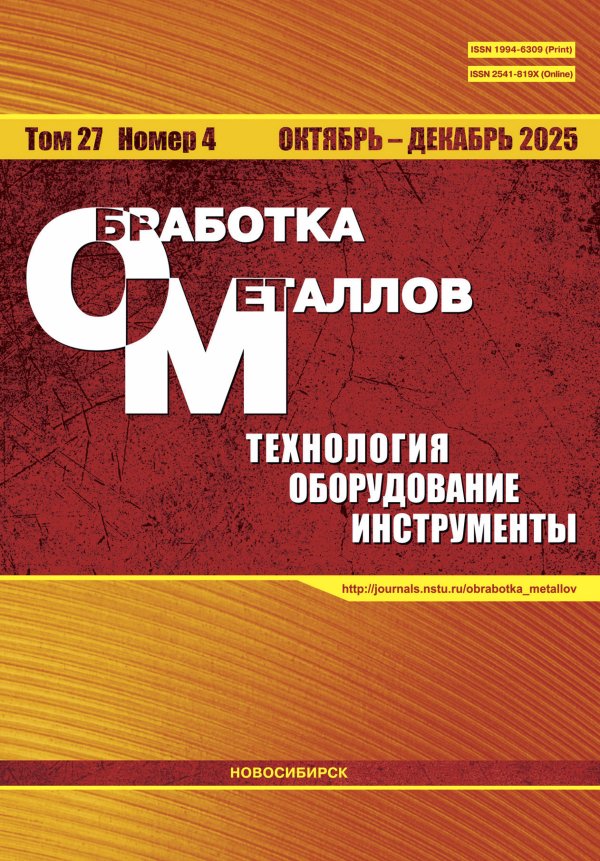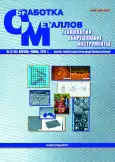ВЛИЯНИЕ НЕМЕТАЛЛИЧЕСКИХ ВКЛЮЧЕНИЙ НА СОПРОТИВЛЕНИЕ СТАЛИ РАЗРУШЕНИЮ ПРИ МНОГОКРАТНОМ ДИНАМИЧЕСКОМ СЖАТИИ
- Авторы: Попелюх А.И.1, Веселов С.В.1, Мункуева Д.Д.1, Тимонин В.В.2, Карпов В.Н.2
-
Учреждения:
- Новосибирский государственный технический университет
- Институт горного дела им. Н.А. Чинакала СО РАН
- Выпуск: № 2 (2017)
- Страницы: 67-78
- Раздел: МАТЕРИАЛОВЕДЕНИЕ
- URL: https://bakhtiniada.ru/1994-6309/article/view/302105
- DOI: https://doi.org/10.17212/1994-6309-2017-2-67-78
- ID: 302105
Цитировать
Полный текст
Аннотация
Ключевые слова
Об авторах
Альберт Игоревич Попелюх
Новосибирский государственный технический университет
Email: aip13@mail.ru
пр. К. Маркса, 20, г. Новосибирск, 630073, Россия
Сергей Викторович Веселов
Новосибирский государственный технический университет
Email: veselov_s@inbox.ru
пр. К. Маркса, 20, г. Новосибирск, 630073, Россия
Дарима Дабаевна Мункуева
Новосибирский государственный технический университет
Email: 19darima94@mail.ru
пр. К. Маркса, 20, г. Новосибирск, 630073, Россия
Владимир Владимирович Тимонин
Институт горного дела им. Н.А. Чинакала СО РАН
Email: timonin2005@ngs.ru
Красный проспект, 54, г. Новосибирск, 630091, Россия
Владимир Николаевич Карпов
Институт горного дела им. Н.А. Чинакала СО РАН
Email: kvn184@yandex.ru
Красный проспект, 54, г. Новосибирск, 630091, Россия
Список литературы
- Downhole high-pressure air hammers for open pit mining / A.A. Repin, B.N. Smolyanitsky, S.E. Alekseev, A.I. Popelyukh, V.V. Timonin, V.N. Karpov // Journal of Mining Science. - 2014. - Vol. 50, no. 5. - P. 929-937. - doi: 10.1134/S1062739114050123.
- Murakami Y., Nomoto T., Ueda T. Factors influencing the mechanism of superlong fatigue failure in steels // Fatigue and Fracture of Engineering Materials and Structures. - 1999. - Vol. 22, iss. 7. - Р. 581-590. - doi: 10.1046/j.1460-2695.1999.00187.x.
- Bergengren Y., Larsson M., Melander A. The influence of machining defects and inclusions on the fatigue properties of a hardened spring steel // Fatigue and Fracture of Engineering Materials and Structures. - 1995. - Vol. 18, iss. 10. - Р. 1071-1087. - doi: 10.1111/j.1460-2695.1995.tb00840.x.
- Estimation of maximum inclusion size and fatigue strength in high-strength ADF1 steel / J.M. Zhang, J.F. Zhang, Z.G. Yang, G.Y. Li, G. Yao, S.X. Li, W.J. Hui, Y.Q. Weng // Materials Science and Engineering: A. - 2005. - Vol. 394, iss. 1-2. - P. 126-131. - doi: 10.1016/j.msea.2004.11.015.
- Influence of nonmetallic inclusions on endurance of percussive machines / A.A. Repin, S.E. Alekseev, A.I. Popelyukh, A.M. Teplykh // Journal of Mining Science. - 2011. - Vol. 47, iss. 6. - Р. 798-807. - doi: 10.1134/S1062739147060128.
- Исследование конструктивной прочности материалов после комбинированного упрочнения и специальных видов сварки / А.В. Плохов, А.И. Попелюх, С.В. Веселов, А.Г. Тюрин, А.А. Никулина. - Новосибирск: Изд-во НГТУ, 2015. - 392 с. - ISBN 978-5-7782-2635-7.
- Influence of inclusion size on fatigue behavior of high strength steels in the gigacycle fatigue regime / J.M. Zhang, S.X. Li , Z.G. Yang, G.Y. Li, W.J. Hui, Y.Q. Weng // International Journal of Fatigue. - 2007. - Vol. 29, iss. 4. - Р. 765-771. - doi: 10.1016/j.ijfatigue.2006.06.004.
- Dominguez G.M.A. Prediction of very high cycle fatigue failure for high strength steels, based on the inclusion geometrical properties // Mechanics of Materials. - 2008. - Vol. 40, iss. 8. - Р. 636-640. - doi: 10.1016/j.mechmat.2008.03.001.
- On the critical inclusion size of high strength steels under ultra-high cycle fatigue / Z.G. Yang, J.M. Zhang, S.X. Li, G.Y. Li, Q.Y. Wang, W.J. Hui, Y.Q. Weng // Materials Science and Engineering: A. - 2006. - Vol. 427, iss. 1-2. - Р. 167-174. - doi: 10.1016/j.msea.2006.04.068.
- Явойский В.И., Рубенчик Ю.И., Окенко А.П. Неметаллические включения и свойства стали. - М.: Металлургия, 1980. - 284 с.
- Murakami Y. Metal fatigue: effects of small defects and nonmetallic inclusions. - Amsterdam: Elsevier, 2002. - 369 p. - ISBN 9780080440644.
- Influence of non-metallic inclusions on the fatigue properties of heavily cold drawn steel wires / K. Lambrighs, I. Verpoest, B. Verlinden, M. Wevers // Procedia Engineering. - 2010. - Vol. 2, iss. 1. - Р. 173-181. - doi: 10.1016/j.proeng.2010.03.019.
- Lankford J. Initiation and early growth of fatigue cracks in high strength steel // Engineering Fracture Mechanics. - 1977. - Vol. 9, iss. 3. - P. 617-624. - doi: 10.1016/0013-7944(77)90074-1.
- The fatigue behaviors of zero-inclusion and commercial 42CrMo steels in the super-long fatigue life regime / Z.G. Yang, S.X. Li, J.M. Zhang, J.F. Zhang, G.Y. Li, Z.B. Li,W.J. Hui, Y.Q. Weng // Acta Materialia. - 2004. - Vol. 52, iss. 18. - Р. 5235-5241. - doi: 10.1016/j.actamat.2004.06.031.
- Заславский А.Я. Современные автоматные стали. Состав, включения, свойства. - Челябинск: Изд-во ЮУрГУ, 2005. - 205 с. - ISBN 5-696-03332-6.
- Шпис Х.И. Поведение неметаллических включений в стали при кристаллизации и деформации. - М.: Металлургия, 1971. - 125 с.
- Финкель В.М. Физические основы торможения разрушения. - М.: Металлургия, 1977. - 359 с.
- Штремель М.А. Прочность сплавов. Ч. 1. Дефекты решетки. - М.: Металлургия, 1982. - 280 с.
- Горелик С.С., Скаков Ю.А., Расторгуев Л.Н. Рентгенографический и электронно-оптический анализ. - М.: МИСИС, 2002. - 360 с. - ISBN 5-87623-096-0.
- Комяк Н.И., Мясников Ю.Г. Рентгеновские методы и аппаратура для определения напряжений. - Л.: Машиностроение, 1972. - 87 с.
- Specific features of the nucleation and growth of fatigue cracks in steel under cyclic dynamic compression / A.I. Popelyukh, P.A. Popelyukh, A.A. Bataev, A.A. Nikulina, A.I. Smirnov // The Physics of Metals and Metallography. - 2016. - Vol. 117, iss. 3. - P. 279-287. - doi: 10.1134/S0031918X1603011X.
Дополнительные файлы







